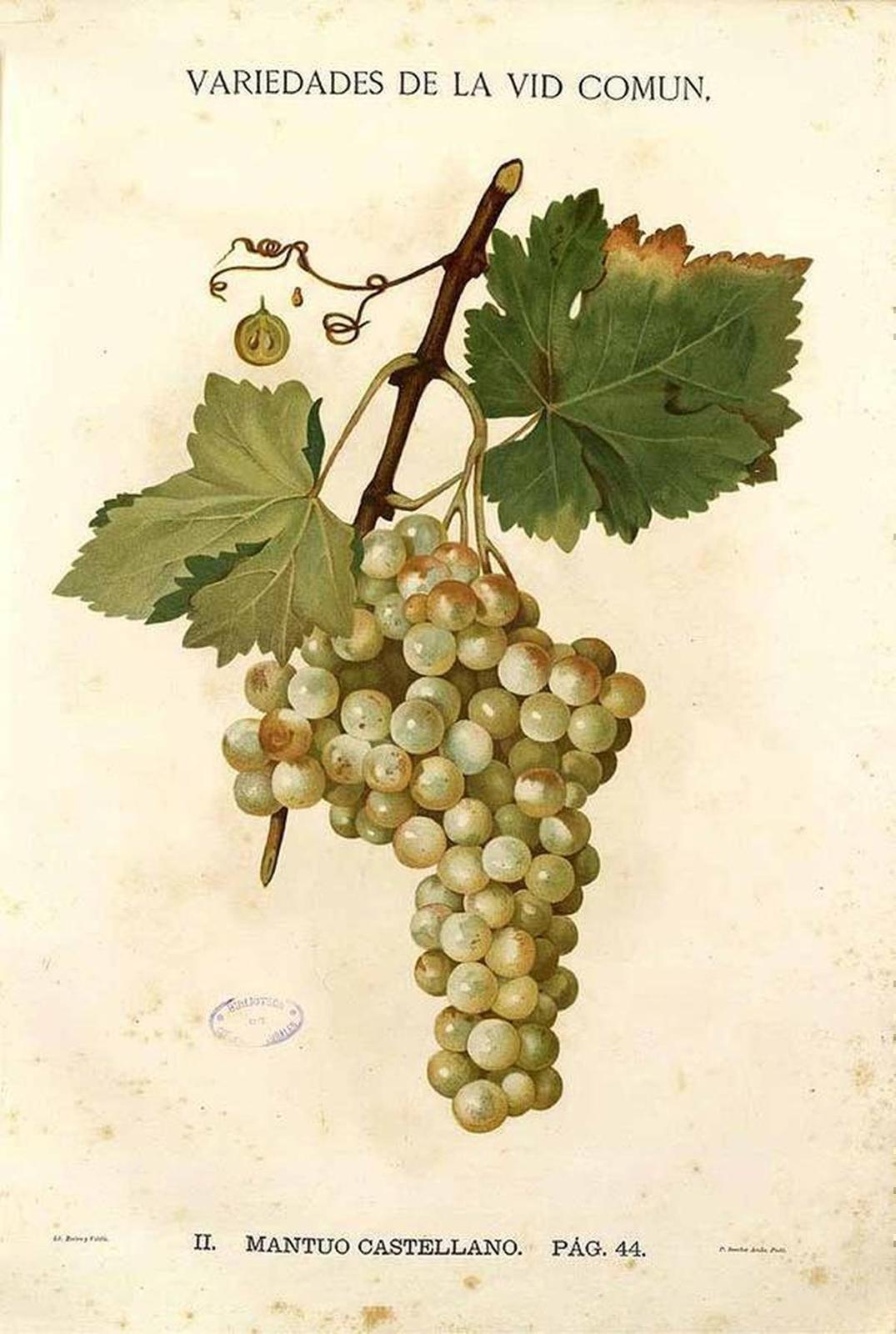Vitis vinifera L. / Vitis spp.
VitaceaeEl cultivo de la vid, realizado al parecer por primera vez en Asia Menor, se pierde en los albores de la historia.
La vid es un atributo de Baco, dios del vino, y de sus seguidores, las Ménades. En las bacanales los participantes se ceñían la cabeza con una corona de hojas de parra. La planta y su fruto, mencionados a menudo en las Sagradas Escrituras, se consideran generalmente símbolo de Cristo y de su sacrificio. Dicha interpretación se basa en el conocido pasaje del Evangelio de san Juan en el que el mismo Jesús afirma: yo soy la verdadera vida.
Recomendaciones del agrónomo andalusí Ibn Luyun son rodear la heredad con viñas, y en los paseos que la atraviesen plantar parrales, que proporcionan además una agradable sombra. El jardín debe quedar ceñido por uno de estos paseos con objeto de separarlo del resto de la heredad. Por tanto, y contrariamente a lo que se pudiera pensar dadas las prescripciones islámicas, la vid fue cultivada por los musulmanes medievales de al-Andalus: el famoso carmen granadino, los patios y jardines privados que caracterizan al barrio del Albaicín, deriva de la palabra karm, literalmente “finca cultivada con vides.”
La vid en su forma de parra aparece en las remodelaciones que tienen lugar en los jardines del Alcázar durante los reinados de Felipe II y Felipe III. Así, se plantan especímenes en los jardines de Troya y de la Alcubilla, además de en el Cuarto del Sol.
El cultivo de la vid representa toda una continuidad cultural en España que va al menos desde época romana, pasa por los árabes y la monarquía hispánica de los Austrias, y llega hasta la actualidad.
Procedencia
Oriental/AsiáticoCalendario
Hábitat
Morfología
 Enredadera
Enredadera
 Trepadera
Trepadera
 Simple
Simple
 Palmeada
Palmeada
 Orbicular
Orbicular
 Alterna
Alterna
 Dentado
Dentado
 Lobado
Lobado
 Serrado
Serrado
 Auriculada
Auriculada
 Cordada
Cordada
 Acuminado
Acuminado
 Agudo
Agudo
 Caduco
Caduco
